Popular categories
Looking for a yarn?

100% Alpaca
from 4.85 $ /50g
Order DROPS Buttons

Arched (white) No. 521
OrderClicking the ORDER button will redirect you to Wool Warehouse Direct Ltd website
Order DROPS Needles & Hooks
Clicking the ORDER button will redirect you to Wool Warehouse Direct Ltd website
The yarn cost is calculated from the pattern’s smallest size and the yarn’s cheapest product type. Looking for an even better price? You might find it on the DROPS Deals!
Baby Fox Onesie
Knitted body for babies in DROPS Alpaca. The piece is worked with a fox-pattern, with straps and pocket. Sizes: Premature – 4 years.
Change language:
English (US/in)- English (US/in)
- Česky
- Dansk
- Deutsch
- Eesti keel
- English (UK/cm)
- Español
- Français
- Íslenska
- Italiano
- Magyar
- Nederlands
- Norsk
- Polski
- Português
- Suomi
- Svenska
- English (UK/cm), Bulgaria
- English (UK/cm), Croatia
- English (UK/cm), Greece
- English (UK/cm), Latvia
- English (UK/cm), Lithuania
- English (UK/cm), Romania
- English (UK/cm), Slovenia
- Česky, Slovakia
Yarn group A
-----------------------------------------------------------
SIZES:
(<0) 0/1 - 1/3 - 6/9 - 12/18 months (2 - 3/4) years
The size is equivalent to the baby’s height in cm:
(40/44) 48/52 - 56/62 - 68/74 - 80/86 (92 - 98/104)
The size is equivalent to the baby’s height in feet:
(1ft4/1ft5) 1ft7/1ft8 – 1ft 10/2ft – 2ft3/2ft5 – 2ft7/2ft9 (3ft – 3ft3/3ft5)
MATERIALS:
DROPS ALPACA from Garnstudio (belongs to yarn group A)
(50) 50-100-100-100 (100-100) g color 2925, rust
(50) 50-50-50-50 (50-50) g color 9020, light pearl grey
A left over of 506, dark grey
KNITTING GAUGE:
24 stitches in width and 32 rows in height with stockinette stitch = 10 x 10 cm = 4" x 4".
NEEDLES:
DROPS CIRCULAR NEEDLE SIZE 3 MM = US 2,5: Length 40 cm 1= 16".
Needle size is only a guide. If you get too many stitches on 10 cm = 4", change to a larger needle size. If you get too few stitches on 10 cm = 4", change to a smaller needle size.
DROPS MOTHER OF PEARL BUTTONS, Arched (white) NO 521: 2 items in all sizes.
-------------------------------------------------------
Alternative Yarn – See how to change yarns here
Yarn Groups A to F – Use the same pattern and change the yarn here
Yarn usage using an alternative yarn – Use our yarn converter here
-------------------------------------------------------
You might also like...

100% Alpaca
from 4.85 $ /50g
Order DROPS Buttons

Arched (white) No. 521
OrderClicking the ORDER button will redirect you to Wool Warehouse Direct Ltd website
Order DROPS Needles & Hooks
Clicking the ORDER button will redirect you to Wool Warehouse Direct Ltd website
The yarn cost is calculated from the pattern’s smallest size and the yarn’s cheapest product type. Looking for an even better price? You might find it on the DROPS Deals!
Pattern instructions
START THE PIECE HERE:
-------------------------------------------------------
BODY – SHORT OVERVIEW OF THE PIECE:
The piece is worked in 2 sections, back and forth before being put on the same short circular needle and continued in the round. The piece is divided for the front and back pieces and they are finished separately back and forth. An edge is knitted up around each leg. Then a loose pocket is worked with fox-pattern, which is sewn on to the body.
BACK PIECE:
Cast on (8) 10-10-12-12 (14-14) stitches with circular needle size 3 mm = US 2,5 and rust. Work 1 edge stitch in GARTER STITCH – read description above, work (6) 8-8-10-10 (12-12) stitches in stockinette stitch and 1 edge stitch in garter stitch. REMEMBER THE KNITTING GAUGE! When the piece measures (1) 1-2-2-2 (3-3) cm = (3/8") ⅜"-¾"-¾"-¾" (1⅛"-1⅛"), cast on 2 stitches at the end of each row a total of (5) 6-7-7-8 (8-9) times on each side, then cast on (5) 5-5-6-7 (8-9) stitches at the end of the next 2 rows = (38) 44-48-52-58 (62-68) stitches.
Lay the piece to one side and work the front piece.
FRONT PIECE:
Cast on (8) 10-10-12-12 (14-14) stitches with circular needle size 3 mm = US 2,5 and rust. Work 1 edge stitch in garter stitch, (6) 8-8-10-10 (12-12) stitches in stockinette stitch and 1 edge stitch in garter stitch.
When the piece measures (3) 4-5-6-7 (8-10) cm = (1⅛") 1½"-2"-2⅜"-2¾" (3⅛"-4"), cast on 2 stitches at the end of each row a total of 3 times on each side, then cast on (9) 11-13-14-17 (18-21) stitches at the end of the next 2 rows = (38) 44-48-52-58 (62-68) stitches.
BODY:
Place the stitches from the back and front pieces on the same short circular needle size 3 mm = US 2,5 = (76) 88-96-104-116 (124-136) stitches. Insert 1 marker between each piece. The markers will be used when binding off stitches for the armholes.
Work stockinette stitch in the round. When the piece measures (9) 12-16-17-19 (21-23) cm = (3⅛") 4¾"-6¼"-6¾"-7½" (8¼"-9") from the markers, work 2 RIDGES – read description above – over 4 stitches on each side of both markers (= a total of 8 garter stitches on each side). On the next round bind off 3 stitches for the armholes on each side of both markers (= 6 stitches bind off on each side of the piece); front and back pieces are finished separately.
FRONT PIECE:
= (32) 38-42-46-52 (56-62) stitches. The piece is continued back and forth with 3 stitches in garter stitch on each side of the piece.
On the first row from the right side decrease 1 stitch on each side of the piece – read DECREASE TIP! Decrease like this on each row from the right side a total of (4) 4-6-6-7 (6-7) times = (24) 30-30-34-38 (44-48) stitches. Continue with stockinette stitch and 3 stitches in garter stitch on each side until the piece measures (4) 5-5-6-7 (8-10) cm = (1½") 2"-2"-2⅜"-2¾" (3⅛"-4") from the division. On the next row from the wrong side decrease 1 stitch in the middle of the piece by purling 2 together = (23) 29-29-33-37 (43-47) stitches.
On the next row from the right side work rib as follows:
3 stitches in garter stitch, * knit 1, 1 stitch in garter stitch *, work from *-* until there are 4 stitches left, finish with knit 1 and 3 stitches in garter stitch.
When the piece measures (5) 6-6-7-8 (9-11) cm = (2") 2⅜"-2⅜"-2¾"-3⅛" (3½"-4⅜") from the division, work 2 buttonholes on the next row from the right side as follows:
Work 3 stitches in garter stitch, knit 1, 1 stitch in garter stitch, slip 1 stitch as if to knit, knit 1, pass the slipped stitch over the knitted stitch, 1 yarn over, work as before until there are 7 stitches left, 1 yarn over, knit 2 together, 1 stitch in garter stitch, knit 1 and 3 stitches in garter stitch.
Bind off with knit when the piece measures (6) 7-7-8-9 (10-12) cm = (2⅜") 2¾"-2¾"-3⅛"-3½" (4"-4¾") from the division.
BACK PIECE:
= (32) 38-42-46-52 (56-62) stitches. Work back and forth with 3 stitches in garter stitch in each side.
On first row from right side decrease 1 stitch in each side of piece – read DECREASE TIP. Decrease like this on each row from right side a total of 4 times = (24) 30-34-38-44-(48-54) stitches.
On the next row from the wrong side decrease 1 stitch in the middle of the piece by purling 2 together = (23) 29-33-37-43 (47-53) stitches.
Continue back and forth in stockinette stitch with 3 garter stitches in each side until piece measures (4) 5-5-6-7 (8-10) cm = (1½") 2"-2"-2⅜"-2¾" (3⅛"-4") from division.
On the next row from the right side work rib as follows:
3 stitches in garter stitch, * knit 1, 1 stitch in garter stitch *, work from *-* until there are 4 stitches left, finish with knit 1 and 3 stitches in garter stitch.
Continue back and forth with rib until piece measures (6) 7-7-8-9 (10-12) cm = (2⅜") 2¾"-2¾"-3⅛"-3½" (4" -4¾") from division. Now bind off stitches for the neck and work the straps from the right side as follows:
Work 3 stitches in garter stitch, * knit 1, 1 stitch in garter stitch *, work from *-* a total of (2) 3-3-3-3 (3-3) times, 2 stitches in garter stitch (= (9) 11-11-11-11 (11-11) stitches for strap), bind off the next (5)7-11-15-21(25-31) stitches, work 3 stitches in garter stitch, * knit 1, 1 stitch in garter stitch *, work from *-* a total of (2) 3-3-3-3 (3-3) times and finish with 2 stitches in garter stitch (= (9) 11-11-11-11 (11-11) stitches for strap).
Work back and forth with rib and garter stitch over the one strap; leave the other stitches on the needle.
Continue with rib until the piece measures 8-14 cm = 3⅛"-5½" from the division, work 2 ridges over all stitches, then bind off with knit. Work the other strap in the same way.
POCKET:
Cast on (33) 42-42-42-54 (54-54) stitches with circular needle size 3 mm = US 2,5 and light pearl grey. Work 1 edge stitch in garter stitch, A.1 (= (31) 40-40-40-52 (52-52) stitches) and finish with 1 edge stitch in garter stitch. Continue this pattern. The whole of A.1 is worked with 1 edge stitch in garter stitch on each side. When A.1 has been worked 1 time in height there are (21) 28-28-28-36 (36-36) stitches on the needle. The piece is now finished with rust.
The piece measures approx. (7) 10-10-10-12 (12-12) cm = (2¾") 4"-4"-4"-4¾" (4¾"-4¾").
On the next row from the right side work rib as follows:
1 edge stitch in garter stitch, * knit 1, 1 stitch in garter stitch *, work from*-* until there are 2 stitches left, at the same time decrease (0) 1-1-1-1 (1-1) stitch, finish with knit 1 and 1 edge stitch in garter stitch = (21) 27-27-27-35 (35-35) stitches. Work rib for 2 cm = ¾" (or to desired length). Bind off with knit.
Work 1 edge; from the (3) 4-4-4-4 (4-4) bind-off stitches on the pocket up to the bind-off edge as follows:
Knit up 18-28 stitches inside the 1 edge stitch from the right side. Work rib starting from the wrong side as follows: * 1 stitch in garter stitch, purl 1 *, work from *-* over all stitches. Bind off with knit from the right side when the edge measures 1 cm = ⅜" – read BINDING-OFF TIP.
Work a similar edge along the other side of the pocket.
EDGE AROUND LEG:
Knit up from the right side approx. 40 to 74 stitches along the one leg-opening with circular needle size 3 mm = US 2,5 and rust; adjust so the number of stitches is divisible by 2 and the edge is loose. Work rib (= knit 1, 1 stitch in garter stitch) back and forth with 1 edge stitch in garter stitch on each side of the piece.
When the edge measures 2-4 cm = 3/4-1½", bind off with knit from the right side.
Repeat around the other leg.
ASSEMBLY:
Sew the opening between the legs. Sew 1 button on each strap.
Sew the fox’s eyes on the pocket with 1 duplicate stitch using dark grey on each light pearl grey section – see circle in diagram.
Sew the nose on the pocket with 1 duplicate stitch using dark grey in each of the (3) 4-4-4-4 (4-4) stitches on rows 2 and 3 at the bottom of the pocket – see marked square in diagram.
Fasten the cast-on edge on the pocket, approx. 2-4 cm = ¾"-1½" up from the last cast-on stitches on the front piece, using duplicate stitches and sew the bind-off edge to the body, so the pocket is flat. Sew the sides of the pocket to the body as far as the bind-off edge.
This pattern has been corrected. Click here to see the correction/s.
Correction: BACK PIECE: = (32) 38-42-46-52 (56-62) stitches. Work back and forth with 3 stitches in garter stitch in each side. On first row from right side decrease 1 stitch in each side of piece – read DECREASE TIP. Decrease like this on each row from right side a total of 4 times = (24) 30-34-38-44-(48-54) stitches. Continue back and forth in stockinette stitch with 3 garter stitches in each side until piece measures (6) 7-7-8-9 (10-12) cm = (2 3/8") 2 3/4"-2 3/4"-3 1/8"-3 1/2" (4"-4 3/4") from the division. Now bind off stitches for the neck and work the straps from the right side as follows: Work 3 stitches in garter stitch, * knit 1, 1 stitch in garter stitch *, work from *-* a total of (2) 3-3-3-3 (3-3) times, 2 stitches in garter stitch (= (9) 11-11-11-11 (11-11) stitches for strap), bind off the next (6) 8-12-16-22 (26-32) stitches, work 3 stitches in garter stitch, * knit 1, 1 stitch in garter stitch *, work from *-* a total of (2) 3-3-3-3 (3-3) times and finish with 2 stitches in garter stitch (= (9) 11-11-11-11 (11-11) stitches for strap)...
Correction: BACK PIECE: ... Continue back and forth in stockinette stitch with 3 garter stitches in each side until piece measures (4) 5-5-6-7 (8-10) cm = (1 1/2") 2"-2"-2 3/8"-2 3/4" (3 1/8"-4") from division. On the next row from the right side work rib as follows: 3 stitches in garter stitch, * knit 1, 1 stitch in garter stitch *, work from *-* until there are 4 stitches left, finish with knit 1 and 3 stitches in garter stitch. Continue back and forth with rib until piece measures (6) 7-7-8-9 (10-12) cm = (2 3/8") 2 3/4"-2 3/4"-3 1/8"-3 1/2" (4"-4 3/4") from division. Now bind off stitches for the neck and work the straps from the right side as follows:...
Correction: BACK PIECE: ... On the next row from the wrong side decrease 1 stitch in the middle of the piece by purling 2 together = (23) 29-33-37-43 (47-53) stitches... ... Work 3 stitches in garter stitch, * knit 1, 1 stitch in garter stitch *, work from *-* a total of (2) 3-3-3-3 (3-3) times, 2 stitches in garter stitch (= (9) 11-11-11-11 (11-11) stitches for strap), bind off the next (5) 7-11-15-21 (25-31) stitches...
Diagram
All measurements in charts are in cm.

|
= knit from the right side, purl from the wrong side with rust |

|
= bind off 1 stitch |

|
= knit from the right side, purl from the wrong side with light pearl grey |

|
= knit 2 together with light grey pearl |

|
= slip 1 stitch as if to knit, knit 1 with light grey pearl, pass the slipped stitch over the knitted stitch |

|
= the eye is sewn in this stitch with duplicate stitch |




What can you do with our patterns? You can share DROPS patterns online, using the pattern original picture, materials, name and number. But you are NOT ALLOWED to reproduce the complete pattern digitally in any way. Yarn stores are welcome to use the DROPS pattern database to promote the sale of our assortment. You can print out our patterns, make as many copies as you’d like. The only thing we ask is that you don't make any changes / additions to the original printed document. And that the patterns according to the DROPS philosophy are given out to the consumers for free. Editorials that wish to publish our patterns in printed books or magazines can contact us for more information. The sale of garments based on DROPS patterns is permitted as long as they are sold as single items or per order. Further commercial use of the patterns is not permitted. It has to be clearly stated that the garment is made based on a design from DROPS DESIGN. The use of clothing labels of which DROPS DESIGN forms part is conditioned by the inclusion of the following text: “A DROPS DESIGN made by …..”. The use of DROPS photos for marketing purposes/sales is only permitted in connection with the use/sale of DROPS products. The photos may not be cut or edited and the logo should be clearly visible.
We reserve the right to withdraw the permission for use of our patterns at any time, notwithstanding the reason.
Each of our patterns has specific tutorial videos to help you.
These step-by-step tutorials might also help you:
Why is the knitting/crochet tension so important?
Knitting tension is what determines the final measurements of your work, and is usually measured per 10 x 10 cm. It is provided like so: number of stitches in width x number of rows in height - eg: 19 stitches x 26 rows = 10 x 10 cm.
The knitting tension is very individual; some people knit/crochet loosely while others work tightly. You adjust the knitting tension with the needle size, which is why the suggested needle size only serve as a guide! You need to adjust this (up or down) to ensure that YOUR knitting tension matches the knitting tension provided in the pattern. If you work with a different knitting tension than provided you will have a different yarn consumption, and your work will have different measurements than what the pattern suggests.
The knitting tension also determines which yarns can replace each other. As long as you achieve the same knitting tension you can replace one yarn with another.
See DROPS lesson: How to measure your tension/gauge
See DROPS video: How to make a gauge tension swatch
How do I know how many balls of yarn I need?
The required amount of yarn is provided in grams, eg: 450 g. To calculate how many balls you’ll need you first need to know how many grams are in 1 ball (25g, 50g or 100g). This information is available if you click on the individual yarn quality on our pages. Divide the amount required with the amount of each ball. For example, if each ball is 50g (the most common amount), the calculation will be as follows: 450 / 50 = 9 balls.
Can I use a different yarn than what the pattern suggests?
The important thing when changing from one yarn to another is that the knitting/crochet tension remains the same. This is so that the measurements of the finished piece will be the same as on the sketch provided. It is easier to achieve the same knitting tension using yarns from the same yarn group. It is also possible to work with multiple strands of a thinner yarn to achieve the knitting tension of a thicker one. Please try our yarn converter. We recommend you to always work a test swatch.
Please NOTE: when changing yarn the garment might have a different look and feel to the garment in the photo, due to individual properties and qualities of each yarn.
See DROPS lesson: Can I use a different yarn than the one mentioned in the pattern?
What are the yarn groups?
All our yarns are categorised into yarn groups (from A to F) according to thickness and knitting tension – group A contains the thinnest yarns and group F the thickest. This makes it easier for you to find alternative yarns to our patterns, should you wish to switch yarn. All yarns within the same group have a similar knitting tension and can easily replace each other. However, different yarn qualities have different structures and properties which will give the finished work a unique look and feel.
How do I use the yarn converter?
At the top of all our patterns you’ll find a link to our yarn converter, which is a helpful tool should you wish to use a different yarn than suggested. By filling in the yarn quality you wish to replace, the amount (in your size) and number of strands, the converter will present good alternative yarns with the same knitting tension. Additionally it will tell you how much you’ll require in the new qualities and whether you’ll need to work with multiple strands. Most skeins are 50g (some are 25g or 100g).
If the pattern is worked with multiple colours, every colour will have to be converted separately. Similarly, if the pattern is worked with several strands of different yarns (for example 1 strand Alpaca and 1 strand Kid-Silk) you will have to find alternatives for each, individually.
Why do you show discontinued yarns in the patterns?
Since different yarns have different qualities and textures we have chosen to keep the original yarn in our patterns. However, you can easily find options among our available qualities by using our yarn converter, or simply pick a yarn from the same yarn group.
It is possible that some retailers still have discontinued yarns in stock, or that someone has a few skeins at home that they would like to find patterns for.
The yarn converter will provide both alternative yarn as well as required amount in the new quality.
What size should I knit?
If you think it's hard to decide what size to make, it can be a good idea to measure a garment you own already and like the size of. Then you can pick the size by comparing those measures with the ones available in the pattern's size chart.
You'll find the size chart at the bottom of the pattern.
See DROPS lesson: How to read size chart
Why do I get the wrong knitting tension with the suggested needle size?
The needle size provided in the pattern serves only as a guide, the important thing is to follow the knitting tension. And since knitting tension is very individual, you will have to adjust the needle size to ensure that YOUR tension is the same as in the pattern – maybe you’ll have to adjust 1, or even 2 needle sizes, up or down to achieve the correct tension. For this, we recommend that you work test swatches.
Should you work with a different knitting tension than the one provided, the measurements of the finished garment might deviate from the measurement sketch.
See DROPS lesson: How to measure your tension/gauge
See DROPS video: How to make a gauge tension swatch
Why is the pattern worked top-down?
Working a garment top-down provides more flexibility and room for personal adjustment. For example it is easier to try the garment on while working, as well as making adjustments to length of yoke and shoulder caps.
The instructions are carefully explaining every step, in the correct order. Diagrams are adjusted to the knitting direction and are worked as usual.
How do I work according to a knitting diagram?
The diagram depicts all rows/rounds, and every stitch seen from the right side. It is read from bottom to top, from right to left. 1 square = 1 stitch.
When working back and forth, every other row is worked from the right side and every other row is worked from the wrong side. When working from the wrong side, the diagram will have to be worked reversed: from left to right, knit stitches are purled, purl stitches are knit etc.
When working in the round every round is worked from the right side and the diagram are worked from right to left on all rounds.
See DROPS lesson: How to read knitting diagrams
How do I work according to a crochet diagram?
The diagram depicts all rows/rounds, and every stitch seen from the right side. It is worked from bottom to top, from right to left.
When working back and forth every other row is worked from the right side: from right to left and every other row is worked from the wrong side: from left to right.
When working in the round, every row in the diagram are worked from the right side, from right to left.
When working a circular diagram you start in the middle and work your way outwards, counter clockwise, row by row.
The rows usually start with a given number of chain stitches (equivalent to the height of the following stitch), this will either be depicted in the diagram or explained in the pattern.
See DROPS lesson: How to read crochet diagrams
How do I work several diagrams simultaneously on the same row/round?
Instructions for working several diagrams after each other on the same row/round, will often be written like so: “work A.1, A.2, A.3 a total of 0-0-2-3-4 times". This means you work A.1 once, then A.2 is worked once, and A.3 is repeated (in width) the number of times provided for your size – in this case like so: S = 0 times, M = 0 times, L=2 times, XL= 3 times and XXL = 4 times.
The diagrams are worked as usual: begin with the first row in A.1, then work the first row in A.2 etc.
See DROPS lesson: How to read knitting diagrams
See DROPS lesson: How to read crochet diagrams
Why are the sleeves shorter in larger sizes?
The total width of the garment (from wrist-to-wrist) will be larger in the larger sizes, despite the actual sleeves being shorter. The larger sizes have longer sleeve caps and wider shoulders, so there will be a good fit in all sizes.
Where on the garment is the length measured?
The measurement sketch/schematic drawing provides information regarding the full length of the garment. If it’s a jumper or a jacket the length is measured from the highest point on the shoulder (usually closest to the neckline), and straight down to the bottom of the garment. It is NOT measured from the tip of shoulder. Similarly, the length of yoke is measured from the highest point on the shoulder and down to where yoke is split into body and sleeves.
See DROPS lesson: How to read a schematic drawing
What is a repeat?
Diagrams are often repeated on the round or in height. 1 repeat is the diagram the way it appears in the pattern. If it says to work 5 repeats of A.1 in the round, then you work A.1 a total of 5 times after/next to each other in the round. If it says to work 2 repeats of A.1 vertically/in height you work the entire diagram once, then begin again at the start and work the entire diagram one more time.
Why does the piece start with more chain stitches than it’s worked with?
Chain stitches are slightly narrower than other stitches and to avoid working the cast-on edge too tight, we simply chain more stitches to begin with. The stitch count will be adjusted on the following row to fit the pattern and measurement sketch.
Why increase before the rib edge when the piece is worked top-down?
The rib edge is more elastic and will contract slightly compared to, for example, stocking stitch. By increasing before the rib edge, you avoid a visible difference in width between the rib edge and the rest of the body.
Why increase in the cast-off edge?
It’s very easy to cast off too tightly, and by making yarn overs while casting off (and simultaneously casting these off) you avoid a too tight cast off edge.
See DROPS video: How to bind off with yarn overs (yo)
How do I increase/decrease on every 3rd and 4th row/round alternately?
To achieve an even increase (or decrease) you can increase on, for example: every 3rd and 4th row alternately, like so: work 2 rows and increase on the 3rd row, work 3 rows and increase on the 4th. Repeat this until the increase is complete.
See DROPS lesson: Increase or decrease 1 st on every 3rd and 4th row alternately
How can I work a jacket in the round instead of back and forth?
Should you prefer to work in the round instead of back and forth, you may of course adjust the pattern. You’ll need to add steeks mid-front (usually 5 stitches), and follow the instructions. When you would normally turn and work from the wrong side, simply work across the steek and continue in the round. At the end you’ll cut the piece open, pick up stitches to work bands, and cover the cut edges.
See DROPS video: How to knit steeks and cut open
Can I work a jumper back and forth instead of in the round?
Should you prefer to work back and forth instead of in the round, you may of course adjust the pattern so you work the pieces separately and then assemble them at the end. Divide the stitches for the body in 2, add 1 edge stitch in each side (for sewing) and work the front and back pieces separately.
See DROPS lesson: Can I adapt a pattern for circular needles into straight needles?
Why is the pattern slightly different than what I see in the photo?
Pattern repeats can vary slightly in the different sizes, in order to get the correct proportions. If you’re not working the exact same size as the garment in the photo, yours might deviate slightly. This has been carefully developed and adjusted so that the complete impression of the garment is the same in all sizes.
Make sure to follow instructions and diagrams for your size!
How do I make a women’s size garment into a men’s size one?
If you have found a pattern you like which is available in women’s size it’s not very difficult to convert it to men’s size. The biggest difference will be the length of sleeves and body. Start working on the women size that you think would fit across the chest. The additional length will be worked right before you cast off for the armhole/sleeve cap. If the pattern is worked top-down you can add the length right after the armhole or before the first decrease on sleeve.
Regarding additional yarn amount, this will depend on how much length you add, but it is better with a skein too many than too few.
How do I prevent a hairy garment from shedding?
All yarns will have excess fibres (from production) that might come off as lint or shedding. Brushed yarns (ie hairier yarns) have more of these loose, excess fibres, causing more shedding.
Shedding also depends on what is worn under or over the garment, and whether this pulls at the yarn fibres. It’s therefore not possible to guarantee that there will be no shedding
Below are some tips on how to get the best result when working with hairier yarns:
1. When the garment is finished (before you wash it) shake it vigorously so the looser hairs come off. NOTE: do NOT use a lint roller, brush or any method that pulls at the yarn.
2. Place the garment in a plastic bag and put it in your freezer - the temperature will cause the fibres to become less attached to each other, and excess fibres will come off easier.
3. Leave in the freezer for a few hours before taking it out and shaking it again.
4. Wash the garment according to the instructions on the yarn label.
Why does my garment pill?
Pilling is a natural process that happens to even the most exclusive of fibers. It's a natural sign of wear and tear that is hard to avoid, and that is most visible in high friction areas of your garment like a sweater's arms and cuffs.
You can make your garment look as new by removing the pilling, using a fabric comb or a pill/lint remover.
In the meantime, you can read the questions and answers that others have left to this pattern or join the DROPS Workshop on Facebook to get help from fellow knitters/crocheters!
Baby Fox Onesie and Hat
Booker’s Baby Fox Onesie
Baby Fox Onesie |
|||||||||||||||||||
 |
 |
||||||||||||||||||
Knitted body for babies in DROPS Alpaca. The piece is worked with a fox-pattern, with straps and pocket. Sizes: Premature – 4 years.
DROPS Baby 36-2 |
|||||||||||||||||||
|
------------------------------------------------------- START THE PIECE HERE: ------------------------------------------------------- BODY – SHORT OVERVIEW OF THE PIECE: The piece is worked in 2 sections, back and forth before being put on the same short circular needle and continued in the round. The piece is divided for the front and back pieces and they are finished separately back and forth. An edge is knitted up around each leg. Then a loose pocket is worked with fox-pattern, which is sewn on to the body. BACK PIECE: Cast on (8) 10-10-12-12 (14-14) stitches with circular needle size 3 mm = US 2,5 and rust. Work 1 edge stitch in GARTER STITCH – read description above, work (6) 8-8-10-10 (12-12) stitches in stockinette stitch and 1 edge stitch in garter stitch. REMEMBER THE KNITTING GAUGE! When the piece measures (1) 1-2-2-2 (3-3) cm = (3/8") ⅜"-¾"-¾"-¾" (1⅛"-1⅛"), cast on 2 stitches at the end of each row a total of (5) 6-7-7-8 (8-9) times on each side, then cast on (5) 5-5-6-7 (8-9) stitches at the end of the next 2 rows = (38) 44-48-52-58 (62-68) stitches. Lay the piece to one side and work the front piece. FRONT PIECE: Cast on (8) 10-10-12-12 (14-14) stitches with circular needle size 3 mm = US 2,5 and rust. Work 1 edge stitch in garter stitch, (6) 8-8-10-10 (12-12) stitches in stockinette stitch and 1 edge stitch in garter stitch. When the piece measures (3) 4-5-6-7 (8-10) cm = (1⅛") 1½"-2"-2⅜"-2¾" (3⅛"-4"), cast on 2 stitches at the end of each row a total of 3 times on each side, then cast on (9) 11-13-14-17 (18-21) stitches at the end of the next 2 rows = (38) 44-48-52-58 (62-68) stitches. BODY: Place the stitches from the back and front pieces on the same short circular needle size 3 mm = US 2,5 = (76) 88-96-104-116 (124-136) stitches. Insert 1 marker between each piece. The markers will be used when binding off stitches for the armholes. Work stockinette stitch in the round. When the piece measures (9) 12-16-17-19 (21-23) cm = (3⅛") 4¾"-6¼"-6¾"-7½" (8¼"-9") from the markers, work 2 RIDGES – read description above – over 4 stitches on each side of both markers (= a total of 8 garter stitches on each side). On the next round bind off 3 stitches for the armholes on each side of both markers (= 6 stitches bind off on each side of the piece); front and back pieces are finished separately. FRONT PIECE: = (32) 38-42-46-52 (56-62) stitches. The piece is continued back and forth with 3 stitches in garter stitch on each side of the piece. On the first row from the right side decrease 1 stitch on each side of the piece – read DECREASE TIP! Decrease like this on each row from the right side a total of (4) 4-6-6-7 (6-7) times = (24) 30-30-34-38 (44-48) stitches. Continue with stockinette stitch and 3 stitches in garter stitch on each side until the piece measures (4) 5-5-6-7 (8-10) cm = (1½") 2"-2"-2⅜"-2¾" (3⅛"-4") from the division. On the next row from the wrong side decrease 1 stitch in the middle of the piece by purling 2 together = (23) 29-29-33-37 (43-47) stitches. On the next row from the right side work rib as follows: 3 stitches in garter stitch, * knit 1, 1 stitch in garter stitch *, work from *-* until there are 4 stitches left, finish with knit 1 and 3 stitches in garter stitch. When the piece measures (5) 6-6-7-8 (9-11) cm = (2") 2⅜"-2⅜"-2¾"-3⅛" (3½"-4⅜") from the division, work 2 buttonholes on the next row from the right side as follows: Work 3 stitches in garter stitch, knit 1, 1 stitch in garter stitch, slip 1 stitch as if to knit, knit 1, pass the slipped stitch over the knitted stitch, 1 yarn over, work as before until there are 7 stitches left, 1 yarn over, knit 2 together, 1 stitch in garter stitch, knit 1 and 3 stitches in garter stitch. Bind off with knit when the piece measures (6) 7-7-8-9 (10-12) cm = (2⅜") 2¾"-2¾"-3⅛"-3½" (4"-4¾") from the division. BACK PIECE: = (32) 38-42-46-52 (56-62) stitches. Work back and forth with 3 stitches in garter stitch in each side. On first row from right side decrease 1 stitch in each side of piece – read DECREASE TIP. Decrease like this on each row from right side a total of 4 times = (24) 30-34-38-44-(48-54) stitches. On the next row from the wrong side decrease 1 stitch in the middle of the piece by purling 2 together = (23) 29-33-37-43 (47-53) stitches. Continue back and forth in stockinette stitch with 3 garter stitches in each side until piece measures (4) 5-5-6-7 (8-10) cm = (1½") 2"-2"-2⅜"-2¾" (3⅛"-4") from division. On the next row from the right side work rib as follows: 3 stitches in garter stitch, * knit 1, 1 stitch in garter stitch *, work from *-* until there are 4 stitches left, finish with knit 1 and 3 stitches in garter stitch. Continue back and forth with rib until piece measures (6) 7-7-8-9 (10-12) cm = (2⅜") 2¾"-2¾"-3⅛"-3½" (4" -4¾") from division. Now bind off stitches for the neck and work the straps from the right side as follows: Work 3 stitches in garter stitch, * knit 1, 1 stitch in garter stitch *, work from *-* a total of (2) 3-3-3-3 (3-3) times, 2 stitches in garter stitch (= (9) 11-11-11-11 (11-11) stitches for strap), bind off the next (5)7-11-15-21(25-31) stitches, work 3 stitches in garter stitch, * knit 1, 1 stitch in garter stitch *, work from *-* a total of (2) 3-3-3-3 (3-3) times and finish with 2 stitches in garter stitch (= (9) 11-11-11-11 (11-11) stitches for strap). Work back and forth with rib and garter stitch over the one strap; leave the other stitches on the needle. Continue with rib until the piece measures 8-14 cm = 3⅛"-5½" from the division, work 2 ridges over all stitches, then bind off with knit. Work the other strap in the same way. POCKET: Cast on (33) 42-42-42-54 (54-54) stitches with circular needle size 3 mm = US 2,5 and light pearl grey. Work 1 edge stitch in garter stitch, A.1 (= (31) 40-40-40-52 (52-52) stitches) and finish with 1 edge stitch in garter stitch. Continue this pattern. The whole of A.1 is worked with 1 edge stitch in garter stitch on each side. When A.1 has been worked 1 time in height there are (21) 28-28-28-36 (36-36) stitches on the needle. The piece is now finished with rust. The piece measures approx. (7) 10-10-10-12 (12-12) cm = (2¾") 4"-4"-4"-4¾" (4¾"-4¾"). On the next row from the right side work rib as follows: 1 edge stitch in garter stitch, * knit 1, 1 stitch in garter stitch *, work from*-* until there are 2 stitches left, at the same time decrease (0) 1-1-1-1 (1-1) stitch, finish with knit 1 and 1 edge stitch in garter stitch = (21) 27-27-27-35 (35-35) stitches. Work rib for 2 cm = ¾" (or to desired length). Bind off with knit. Work 1 edge; from the (3) 4-4-4-4 (4-4) bind-off stitches on the pocket up to the bind-off edge as follows: Knit up 18-28 stitches inside the 1 edge stitch from the right side. Work rib starting from the wrong side as follows: * 1 stitch in garter stitch, purl 1 *, work from *-* over all stitches. Bind off with knit from the right side when the edge measures 1 cm = ⅜" – read BINDING-OFF TIP. Work a similar edge along the other side of the pocket. EDGE AROUND LEG: Knit up from the right side approx. 40 to 74 stitches along the one leg-opening with circular needle size 3 mm = US 2,5 and rust; adjust so the number of stitches is divisible by 2 and the edge is loose. Work rib (= knit 1, 1 stitch in garter stitch) back and forth with 1 edge stitch in garter stitch on each side of the piece. When the edge measures 2-4 cm = 3/4-1½", bind off with knit from the right side. Repeat around the other leg. ASSEMBLY: Sew the opening between the legs. Sew 1 button on each strap. Sew the fox’s eyes on the pocket with 1 duplicate stitch using dark grey on each light pearl grey section – see circle in diagram. Sew the nose on the pocket with 1 duplicate stitch using dark grey in each of the (3) 4-4-4-4 (4-4) stitches on rows 2 and 3 at the bottom of the pocket – see marked square in diagram. Fasten the cast-on edge on the pocket, approx. 2-4 cm = ¾"-1½" up from the last cast-on stitches on the front piece, using duplicate stitches and sew the bind-off edge to the body, so the pocket is flat. Sew the sides of the pocket to the body as far as the bind-off edge. |
|||||||||||||||||||
Diagram explanations |
|||||||||||||||||||
|
|||||||||||||||||||

|
|||||||||||||||||||

|
|||||||||||||||||||

|
|||||||||||||||||||

|
|||||||||||||||||||
|
Have you made this or any other of our designs? Tag your pictures in social media with #dropsdesign so we can see them! Do you need help with this pattern?You'll find tutorial videos, a Comments/Questions area and more by visiting the pattern on garnstudio.com. © 1982-2024 DROPS Design A/S. We reserve all rights. This document, including all its sub-sections, has copyrights. Read more about what you can do with our patterns at the bottom of each pattern on our site. |
|||||||||||||||||||
With over 40 years in knitting and crochet design, DROPS Design offers one of the most extensive collections of free patterns on the internet - translated to 17 languages. As of today we count 309 catalogs and 11624 patterns - 11615 of which are translated into English (US/in).
We work hard to bring you the best knitting and crochet have to offer, inspiration and advice as well as great quality yarns at incredible prices! Would you like to use our patterns for other than personal use? You can read what you are allowed to do in the Copyright text at the bottom of all our patterns. Happy crafting!










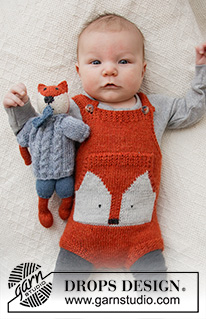



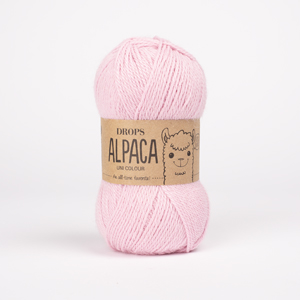







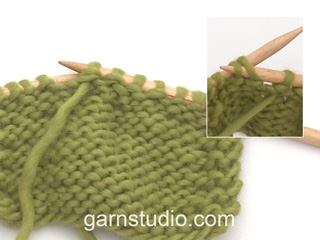






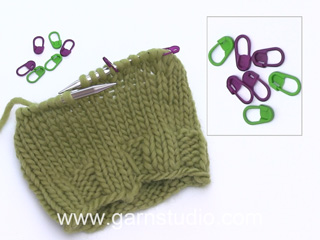

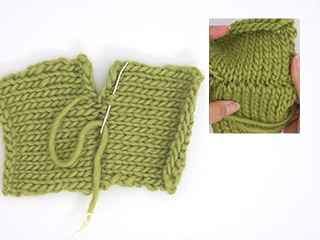
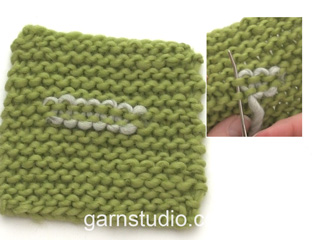

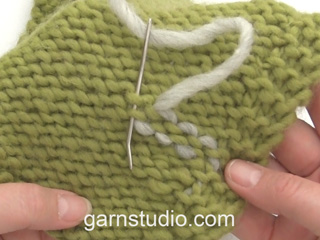
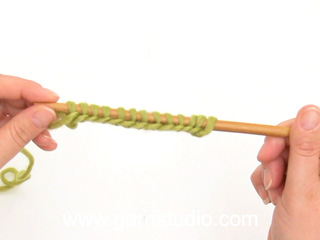
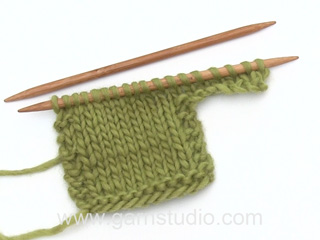

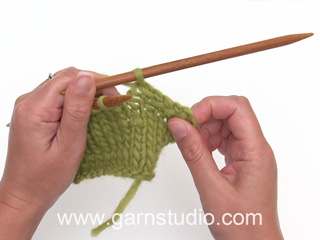


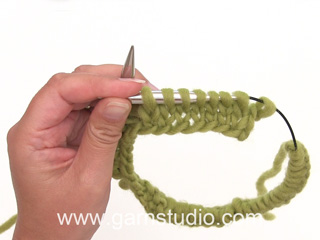
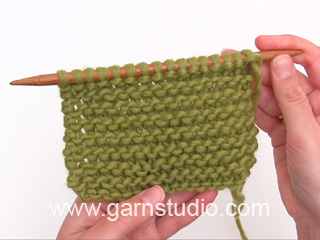






















Comments / Questions (33)
Bonjour, Merci pour ce modèle ! Pourriez-vous me préciser la longueur des bretelles pour une taille 6-9 mois ? Vous indiquez 8/14cm après la séparation, mais je ne comprends pas... Je vous remercie !
23.01.2023 - 18:04DROPS Design answered:
Bonjour et merci Geo, vous devez tricoter les bretelles pendant 8 à 14 cm en fonction de la taille de l'enfant - basez-vous sur un modèle similaire que l'enfant porte, calculez un peu plus long pour que les boutons puissent être ajustés facilement au fur et à mesure que l'enfant va grandir. Bon tricot!
24.01.2023 - 12:19Kære Drops Design Jeg er ved forstykket og skal til at strikke kanten, der ser ud til at være i en form for ribstrik. Helt præcist heri opskriften: På næste pind fra retsiden strikkes der rib således: Strik 3 masker retstrik, * 1 ret, 1 maske retstrik *, strik fra *-* til der er 4 masker tilbage, afslut med 1 ret og 3 masker retstrik. Mit spørgsmål er, hvad er 1 maske retstrik? og skal alle maskerne på vrangsiden strikkes vrang, når der ikke er andet oplyst?
11.01.2023 - 12:14DROPS Design answered:
Hej Eva Maria, 1 maske ret (betyder ret fra retsiden og vrang fra vrangen = glatstrik) 1 maske retstrik (betyder ret fra retsiden og ret fra vrangen = rille) Det vil sige hver 2.maske glat og hver 2.maske rille :)
12.01.2023 - 15:31Hi, im the back piece where it says: When the piece measures (...), cast on 2 stitches at the end of each row a total of (5) 6-7-7-8 (8-9) times on each side. I'm making size 68/74. This means I need 7 times 2 extra stiches at each side, is in total 28 stitches. Does this mean I should cast on 4 extra stitches at end of each neelde of 7 needles, or does this mean I should cast on 2 extra stitches at the beginning and end the end of each needle of 14 needles? Thank you!! Best, Elma
17.10.2022 - 10:15DROPS Design answered:
Dear Mrs Lammers, you start with 12 sts, cast on 2 sts at the end of next 2 rows (after 2 cm) = 14 sts after the first of these 2 rows, and 16 sts at the end of 2nd row, work these 2 rows 6 more times (= you have increased 2 sts 7 times = 14 sts on each side = 40 sts on needle); then cast on 6 sts at the end of next 2 rows (46 sts at the end of the first of these 2 rows; 52 sts at the end of the 2nd row). Hope it can help. Happy knitting!
17.10.2022 - 10:32I have knitted this romper many times for my friends (it’s very popular!) I’ve knitted in 8ply using 3.75mm needles and I don’t do the fox on a pocket - I’ve just knitted it as part of the front. I have found that the finished sizes seem smaller than for suggested age group - so I knit the next size up.
27.04.2022 - 08:37Vielen Dank für die tolle Anleitung. Beim stricken der Tasche bin ich jedoch auf ein Problem gestoßen. Laut Strickschrift sollen in den Reihen 12, 14 und 18 jeweils beidseitig zwei Maschen in der Farbe orange zusammengestrickt werden. Alle umliegenden Machen werden aber in braumeliert gestrickt. Auf den Fotos sind aber keine einzelnen orangen Maschen auf der weißen Fläche zu sehen. Vielen Dank für die Hilfe!
19.02.2022 - 21:35DROPS Design answered:
Liebe Lina, ja stimmt, danke für den Hinweis, unsere Designteam wird sicher eine Korrektur dafür schreiben. Viel Spaß beim stricken!
21.02.2022 - 09:43Hej! Jag skulle uppskatta om ni kunde specificera hur långa hängslena ska stickas beroende på vilken storlek man stickar, samt exakt varifrån ni vill att man mäter den längden. Om det är från delningen i armhålan så känns det som att de blir oproportionerligt korta jämfört med exempelbildens hängslen.
16.02.2022 - 15:39Comment savoir si ce modèle est simple... compliqué... très compliqué...? Où est il écrit ce le niveau requis ...?
10.01.2022 - 15:17DROPS Design answered:
Bonjour Mme Lepoutre, lisez attentivement les explications, consultez les leçons et les vidéos si besoin et, si vous avez des questions, utilisez cet espace pour les poser. Bon tricot!
10.01.2022 - 16:18Hello. Could you please help clarify the diagram for the pocket? Are all rows shown in the diagram or only RS rows? Also when you come to the decrease rows the legend for the diagram says you decrease with rust when though that part of the fox is knitted with the pearl grey, can you please explain? Thank you
31.12.2021 - 09:29DROPS Design answered:
Dear Dori, the diagram shows all the rows in the pattern, seen from the RS. That is, you work the stitches in WS rows opposite to how they are shown in the diagram. The decreases are worked in pearl grey (=white square, as shown above). Happy knitting!
31.12.2021 - 19:58Hola, en la foto se ve como al empezar la parte superior estuviese hecha en punto elástico y luego se ve un cambio a punto jersey?
30.10.2021 - 16:10DROPS Design answered:
Hola Victoria, se trabaja de abajo arriba. Primero se comienza en punto jersey y se termina en punto elástico.
01.11.2021 - 13:08Hallo, ich komme beim Anfang bei Vorder-und Rückteil mit der angegebenen Strickschrift nicht auf die vorgegebenen Maschenanzahl. Kann mir das jemand erläutern? Danke
12.06.2021 - 22:21DROPS Design answered:
Liebe Jana, was meinen Sie hier? Können Sie uns bitte mehr sagen? Welche Größe stricken Sie? Stimmt Ihre Maschenprobe (= 24 Maschen x 32 Reihen glatt rechts = 10x10 cm)... Danke im voraus für Ihr Verständnis!
14.06.2021 - 08:48